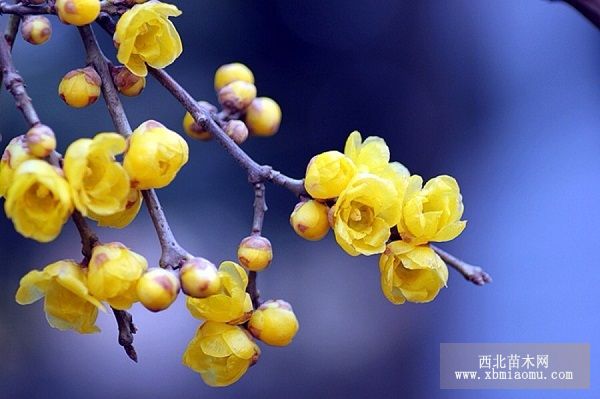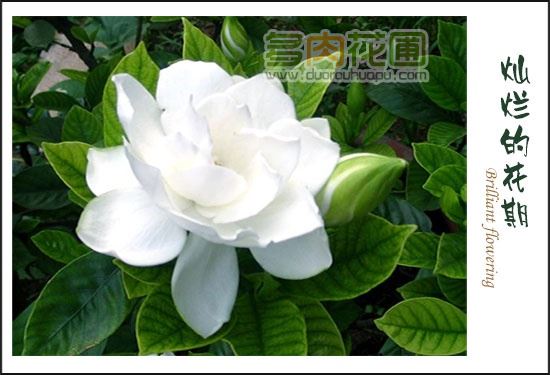The Culture method of Prunus mume
1. Soil: loose, fertile and humus-rich sandy loam should be selected for potted plum cultivation.
2. Watering: Lamei is resistant to drought and waterlogging, such as too high moisture, too moist soil, poor plant growth, affecting flower bud differentiation. Therefore, potted plum should keep the soil dry, usually not dry, watering thoroughly, but "dog days" high temperature season should be more watering to maintain normal plant growth, so that the normal development of flower buds.
3. Temperature: Lamei is fond of sunshine and can withstand semi-overcast. It can survive the winter safely when not less than-15 ℃. It can be cultivated in the open field in the south of Beijing. The flowering stage is at a low temperature of-10 ℃ and the flowers are damaged by freezing.
4. Pruning: wax plum has strong branching power, and there is a proverb that "there is no shortage of branches". Pruning at the right time makes it sprout more strong flower branches and make it blossom more. It is generally appropriate to prune the withered branches, overdense branches, cross branches, disease and insect branches, and leave 2 to 3 pairs of buds at the base of the annual branches, and cut off the upper branches to promote the germination and branching.
5. Fertilization: Lamei is a fertilizer-loving flower. Timely fertilization can promote flower bud differentiation and blossom more. The main fertilizer application was phosphorus and potassium, and the application of nitrogen fertilizer was less, and the general ratio of phosphorus, potassium and nitrogen was 2 to 1, 0.5. In this way, the flowers of preserved plum are big, many and fragrant.
6. Insect pests: Lamei has fewer diseases and more insect pests, such as aphids, shell insects, diamondback moths, curly leaf buds and so on. Aphids suck juice on tender leaf buds, shell insects suck juice on branches, and diamondback moths and leaf rollers bite leaves, new buds, flower buds and so on. In order to reduce the pollution of the flower-growing environment, soil methods can also be used to kill insects, such as shell insects can be killed with acid and vinegar solution, aphids can be killed with washing powder water, if a small amount can be killed manually.
The culture methods of Prunus mume can be cultivated by sowing, striping, grafting, split and other culture methods. Because the sowing method is not easy to maintain the original excellent characteristics of flowers, and the advantage of sowing is that it is cultured in large quantities, but most of them only need to cultivate a few plants, so they are generally not used. The grafting method is more commonly used. There are two methods of grafting: cutting and leaning, and the most commonly used is cutting.

The cutting time is about the middle of March, and it is best to go when the leaf buds have just germinated to the size of the rice grain. If you miss the time, it will not be easy to survive when the leaf buds are too big or have been sent out. Cutting usually uses the seedlings of Gouya Prunus as rootstocks and precious varieties such as vegetarian or Chimonanthus as scions. The scion should select the sturdy and longer branches of the year in advance and cut off its top tip, so that nutrients can be concentrated on the buds in the middle of the branch. The scion is about 7-8 cm long, leaving 1-2 pairs of buds. Do not cut the scion too deep, whichever is slightly exposed xylem. The rootstock stake is cut from 5-6 cm above the ground, cut down from 1 cm of the diameter of the rootstock, split 4-5 cm, insert the scion into the incision of the rootstock, align it with the cambium, bind it firmly with soft hemp skin, and then seal the rootstock and the scion with loose soil until the top of the scion is covered. Keep the soil moist after that. A month later, loosen the seal to check whether it has survived, and if it has survived, wipe out other new buds on the rootstock to promote bud growth. Then cover the loose soil so that the fresh buds will not die by the wind and the sun. After another month, gradually remove the soil, let the buds gradually accept the sun. The preserved plum cultivated by this method grows vigorously and can grow to about 50 centimeters in that year. Preserved plums are also cultured by the split-plant method. If only a few plants need to be cultured, it is suitable to use this method. Ramet culture is generally carried out between February and March in spring when the leaf buds have not yet sprouted. When dividing the plant, first dig up the soil on one side of the root of the mother plant, and cut off the daughter plant from the mother root with a sterilized knife to form a new plant. Then plant, after planting, pay attention to shade, keep the soil moist, wait until after the summer day, apply liquid fertilizer every half a month, the branches and leaves can grow vigorously in that year, and blossom after 2-3 years. By using this method, it is simple and easy to breed, with high survival rate, short seedling time and quick flowers. Culture methods of summer plum I. light and temperature
Summer plum can withstand short-term high temperature of 40 ℃ and cold temperature of-15 ℃. Summer plum likes to be warm and humid, and the environment with weak sun is more suitable for its growth. If summer plum is exposed to full light for a long time, it will cause its leaves to turn yellow and grow poorly. Therefore, Xia Lamei should avoid direct sunlight and stay in the sun for a long time. You only need to give it a proper light temperature every day.
Second, watering
Chimonanthus is resistant to drought and afraid of waterlogging, so the soil needs to be kept in a semi-humid state, but it can not be short of water in summer and should be drained in time in the rainy season so as not to affect the formation of flower buds. In the flowering period of summer plum, the amount of water must be reasonable, too little watering will lead to irregular blooming; too much watering can easily lead to falling flowers and buds.
3. Soil
Summer plum is suitable to grow in sandy soil with loose fertility and good drainage. The basin soil can be prepared with sand slope and coniferous humus at the proportion of 1:1.
IV. Fertilization
Summer plum likes fertilizer, timely fertilization can promote flower bud differentiation and blossom more. In spring, leaf fertilizer is applied twice, and summer plum is fertilized every half a month or so from the end of June to the eve of ambush to promote the formation of flower buds. Fertilization can be applied again in autumn to enrich the flower buds. Apply topdressing two or three times after flowering to before defoliation. Apply thin horseshoe water again before the beginning of winter to provide nutrients for flowering to help it through the winter.
After understanding the culture method of summer plum, let's take a look at what we need to pay attention to.
- Prev

Culture method of Gardenia jasminoides
Gardenia is not only a good helper to improve the home environment, but also an expert in improving the air quality of the community, so how can we maintain it to make it grow better? First, do a good job in breeding. We know that the reproduction of gardenia can be divided into sexual reproduction and asexual reproduction.
- Next

Culture method of Chimonanthus praecox
1, soil: potted planting Chinese plum, should choose loose fertile, rich in humus sandy loam. 2. Watering: The characteristics of Chinese plum are drought tolerance and fear of waterlogging, such as high water content, too wet soil, poor plant growth, affecting flower bud differentiation. Therefore, potted Chinese plum should keep the soil dry, usually do not dry irrigation
Related
- Fuxing push coffee new agricultural production and marketing class: lack of small-scale processing plants
- Jujube rice field leisure farm deep ploughing Yilan for five years to create a space for organic food and play
- Nongyu Farm-A trial of organic papaya for brave women with advanced technology
- Four points for attention in the prevention and control of diseases and insect pests of edible fungi
- How to add nutrient solution to Edible Fungi
- Is there any good way to control edible fungus mites?
- Open Inoculation Technology of Edible Fungi
- Is there any clever way to use fertilizer for edible fungus in winter?
- What agents are used to kill the pathogens of edible fungi in the mushroom shed?
- Rapid drying of Edible Fungi

